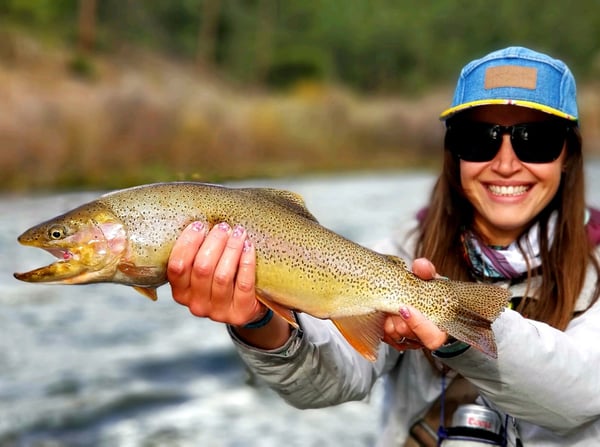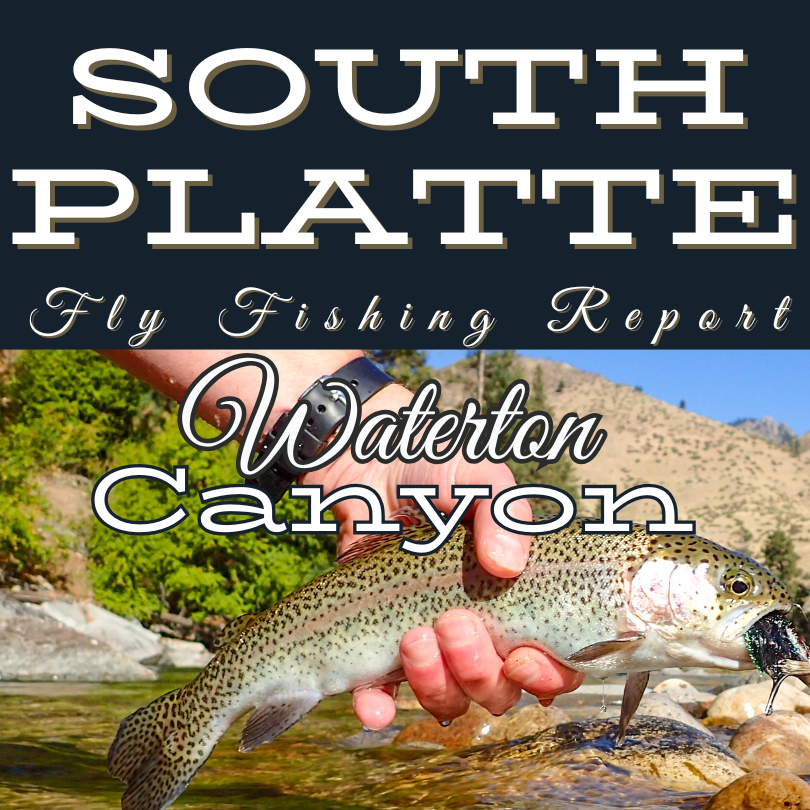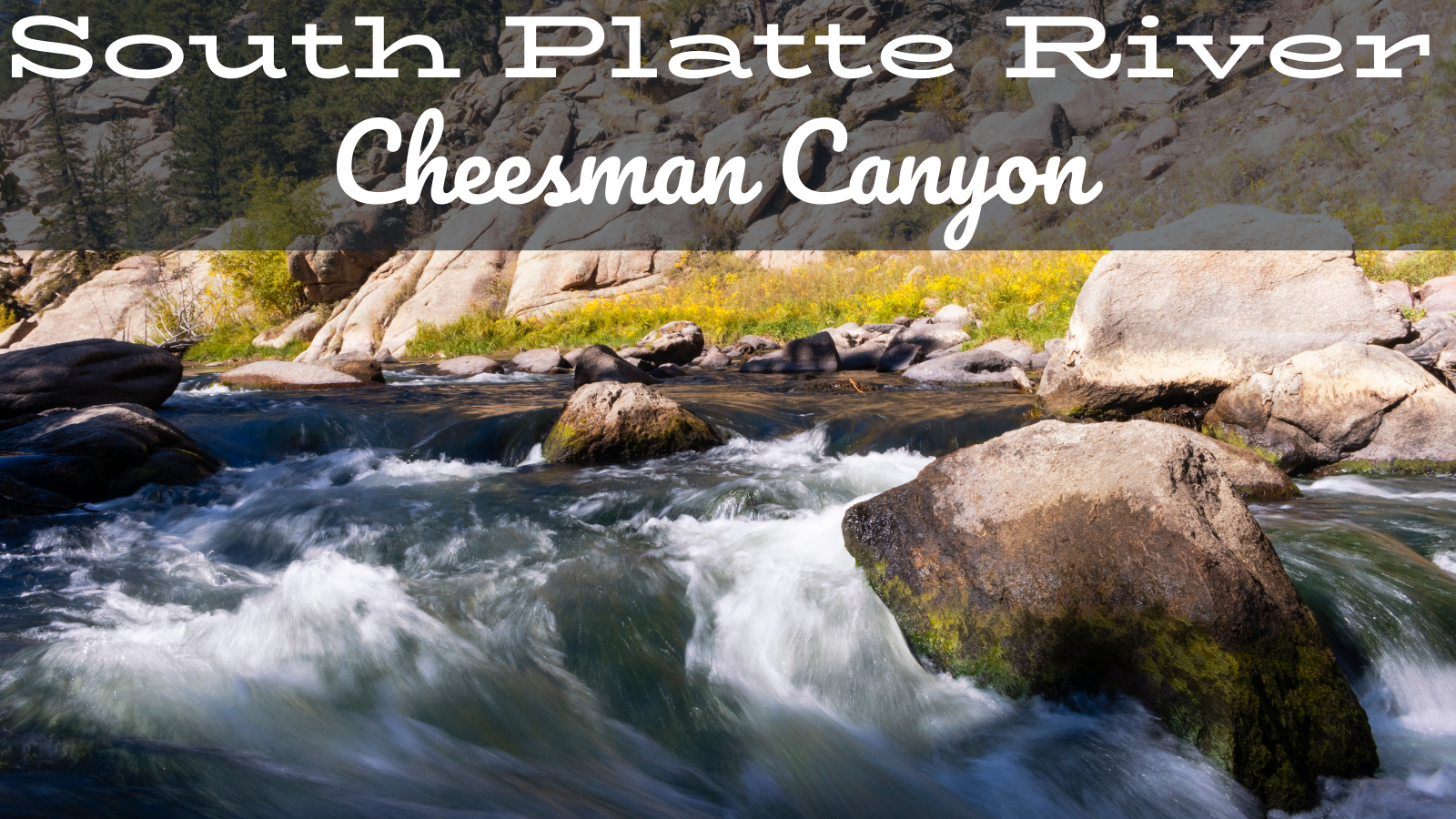Waterton Canyon is one of the most accessible stretches of the South Platte River near Denver, and winter turns it into a quiet, technical fishery that rewards patience. Just outside the city, this canyon offers clear water, consistent trout, and far less pressure than Deckers when conditions line up. If you are looking for fly fishing near Denver without the crowds, Waterton Canyon remains one of the most reliable option
Updated: January 5, 2025
The South Platte River at Waterton Canyon is locked into a stable winter pattern. Low, clear water, cold mornings, and trout holding deep in predictable canyon lanes define the fishery right now. Feeding windows are short but meaningful, with the best activity centered around late morning through early afternoon when sunlight finally reaches the water.
This week’s Waterton Canyon fly fishing report focuses on efficiency and restraint. Midges dominate the food supply, and careful approaches outperform everything else. Trout are present and feeding, but only when drifts are clean and depth is exact. Think slow, think quiet, and think small.
Listen to the Audio Overview
Conditions Summary
%20(3).png?width=800&height=175&name=Guide%20Rating%20(800%20x%20175%20px)%20(3).png)
- Flow: Low and stable winter South Platte baseflow
- Water Temperature: Mid 30s with a slight midday bump
- Air Temperature: High 20s to low 40s; cold starts, brief afternoon warming
- Clarity: Clear
- Crowds: Moderate near the trailhead, light beyond mile two
- Best Window: 11 a.m. to 3 p.m.
- Fishing Type Focus: Winter nymphing with small midges and precise depth control
.png?width=800&height=800&name=unnamed%20(9).png)
Weather
Expect classic early-winter canyon conditions: frosted mornings, occasional wind gusts, and brief midday warmth that collapses quickly once shadows return. Dress for cold hiking and colder fishing.
Top Flies in Your Box This Week
- Black Beauty 20 to 24
- Mercury Midge 20 to 22
- Zebra Midge (black or red) 20 to 22
- RS2 (black or gray) 20 to 22
- WD-40 20 to 22
- Small Pheasant Tail 18 to 20
- Juju Baetis 20 to 22
- Mini Leech (black) 12 to 14
Pro Rig of the Week: The Canyon Drifter
- Indicator: Small yarn or minimal pinch-on indicator
- Lead Fly: Small Pheasant Tail 18 to 20
- Dropper: Mercury Midge or Black Beauty 20 to 22
- Weight: One small BB placed 10 to 12 inches above the lead fly
- Target Water: Inside bends, slow canyon edges, and deep winter troughs
Hatch Chart for January
| Bug Type | Size | Notes |
|---|---|---|
| Midges | 20 to 26 | Primary winter food source |
| Baetis nymphs | 20 to 22 | Brief activity on warm cloudy afternoons |
| Scuds | 14 to 18 | Secondary option in slower winter water |
Download the South Platte Hatch Chart
Access Points
Main Parking Lot to First Mile ⭐⭐⭐⭐☆
Easy access with predictable winter holding water close to the trailhead.
Two Mile Section ⭐⭐⭐⭐⭐
Pressure drops and water quality improves dramatically in winter.
Three Mile Bend ⭐⭐⭐⭐⭐
Soft edges and walking-speed seams ideal for winter nymphing.
Upper Canyon Sections ⭐⭐⭐⭐☆
Longer hike, quieter water, and more technical winter lanes.
Stop Here After You Fish

Platte River Bar and Grill – Littleton, Colorado
A local favorite fifteen minutes from the Waterton gate. No pretense, no tourist crowd, just good food and a warm place to land after a cold day on the South Platte River near Denver.
Website: http://theplatteriverbarandgrill.com/
Local Regulations and Notes on LandOwner Rights
- Artificial flies and lures only
- Heavy non-fishing trail use including bikes and runners
- Ice shelves form along shaded banks
- Respect posted wildlife closures and signage
FAQ
Is Waterton Canyon Good for Fly Fishing in Winter?
Yes. Waterton Canyon offers consistent winter trout fishing near Denver, especially during calm sunny days. Trout hold predictably in slow canyon lanes and feed during short midday windows.
How Far Is Waterton Canyon from Denver?
Waterton Canyon is approximately 20 miles southwest of downtown Denver, making it one of the closest quality fly fishing options on the South Platte River.
Q: How technical is Waterton Canyon right now?
A: Moderately technical. Clean drifts and subtle presentations matter, but it is more forgiving than Cheesman or the Dream Stream.
Q: Are dry flies an option in winter?
A: Rarely. Subsurface midge patterns dominate.
Q: How far should I hike to avoid crowds?
A: Beyond the two mile mark pressure drops significantly.
Q: What tippet works best?
A: 5X for lead flies and 6X for midge droppers.
Q: When does the bite shut down?
A: Typically once canyon shadows return, often shortly after 3 p.m.
Companion Article for December
Colorado Winter Trout Fishing Strategy & Behavior Guide
Photo of the Month

Credit: Colorado Trout Hunters
Book Colorado Trout Hunters for Private Waters and Top access along the South Platte
.png?width=300&height=100&name=Copy%20of%20Rise%20Beyond%20Logo%2012.31.24%20(300%20x%20100%20px).png)
.png)



